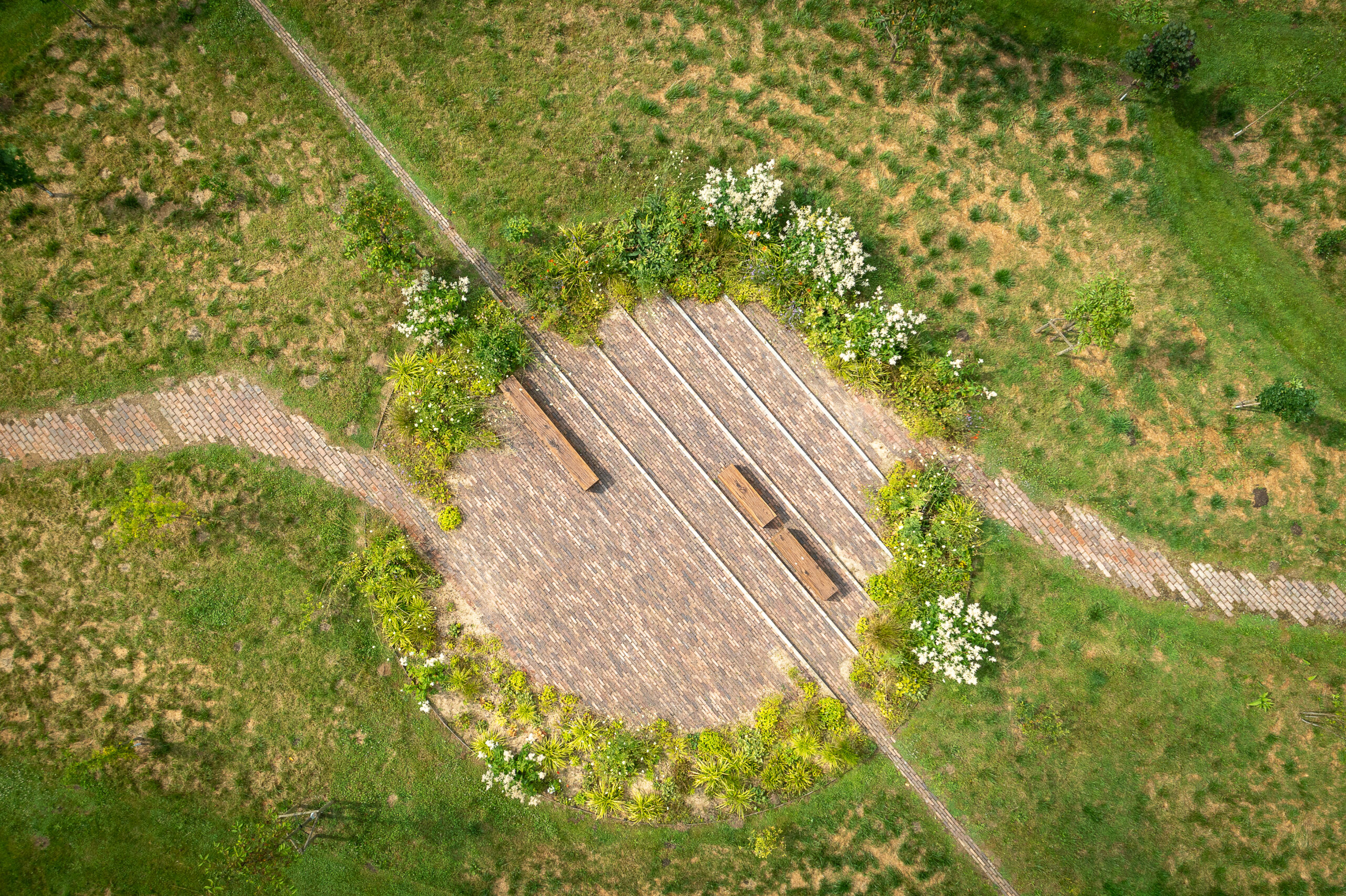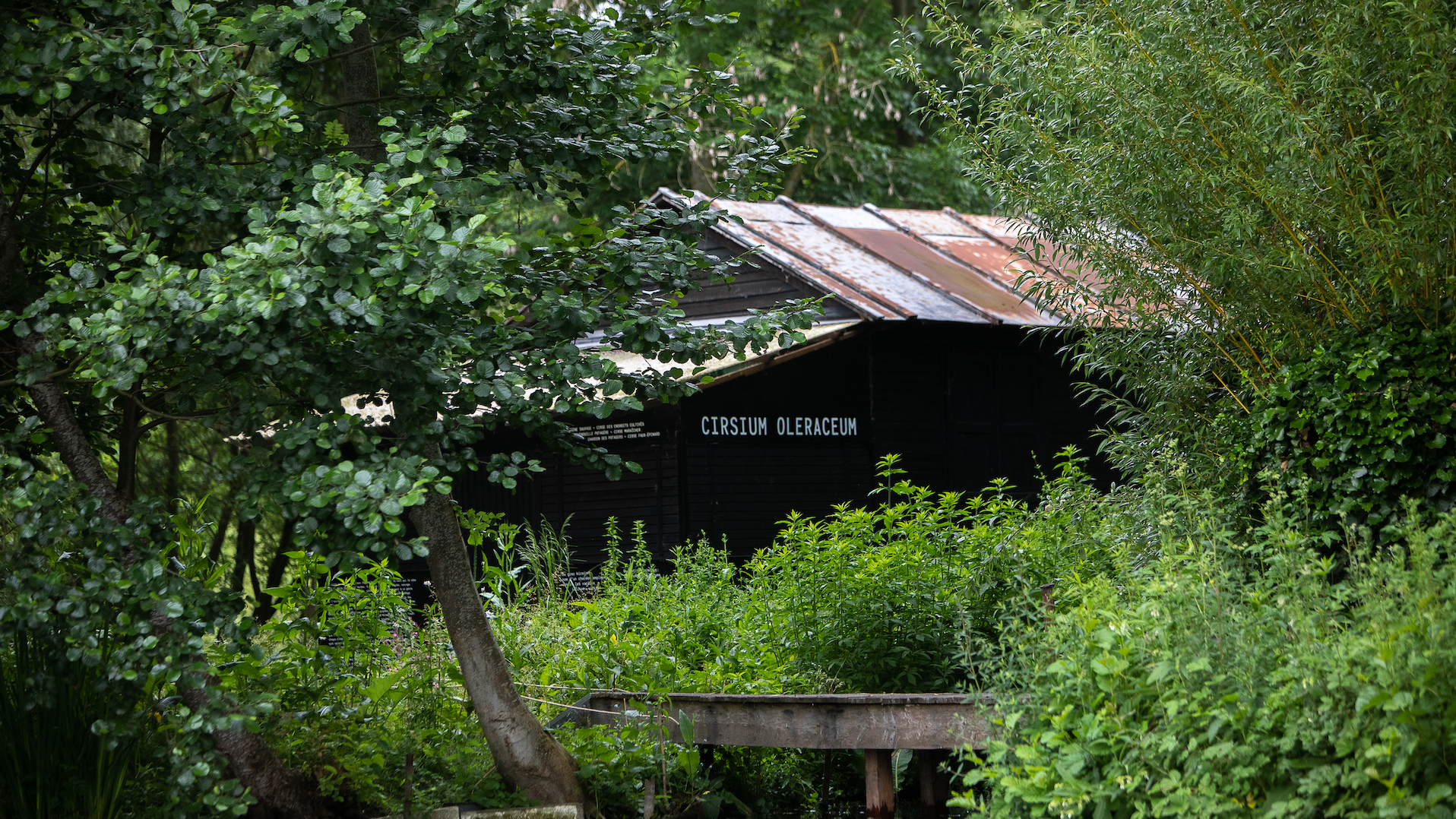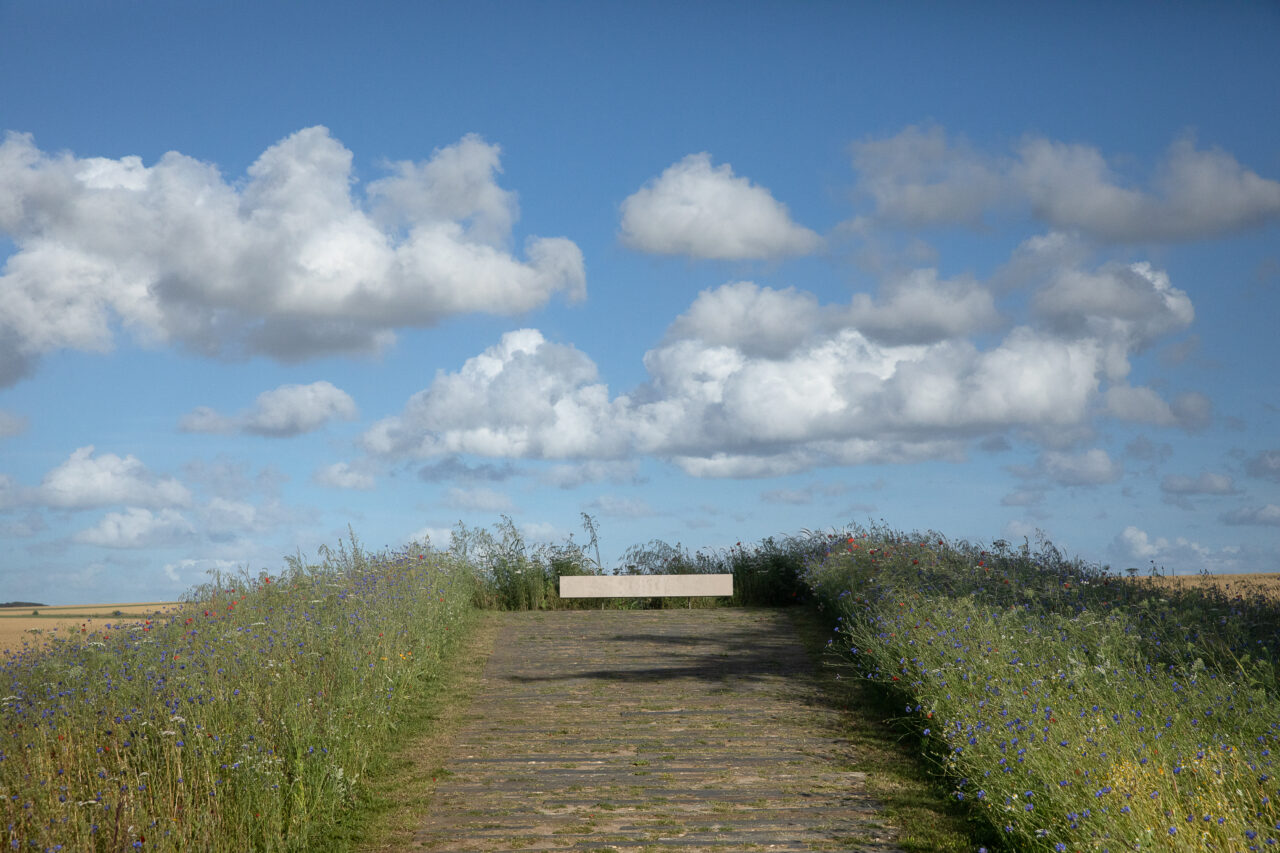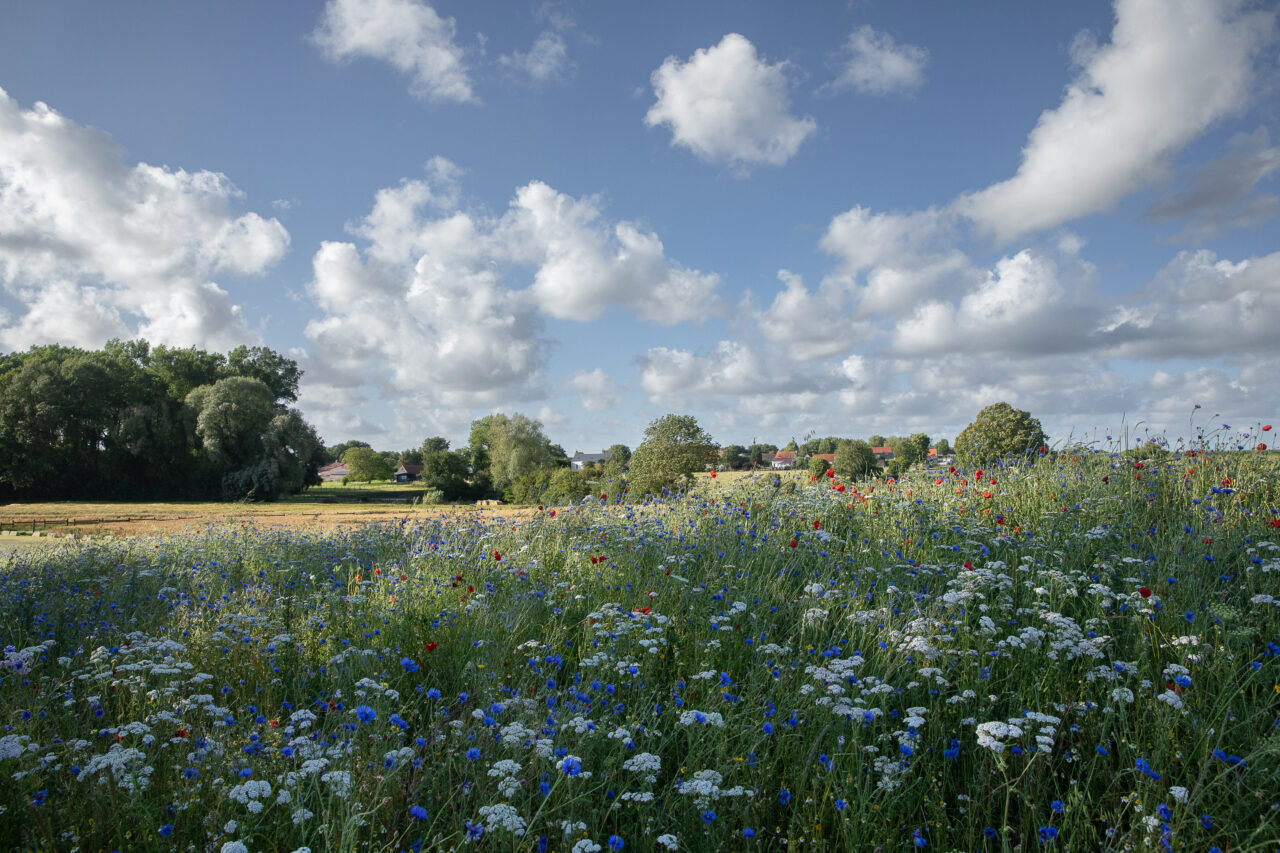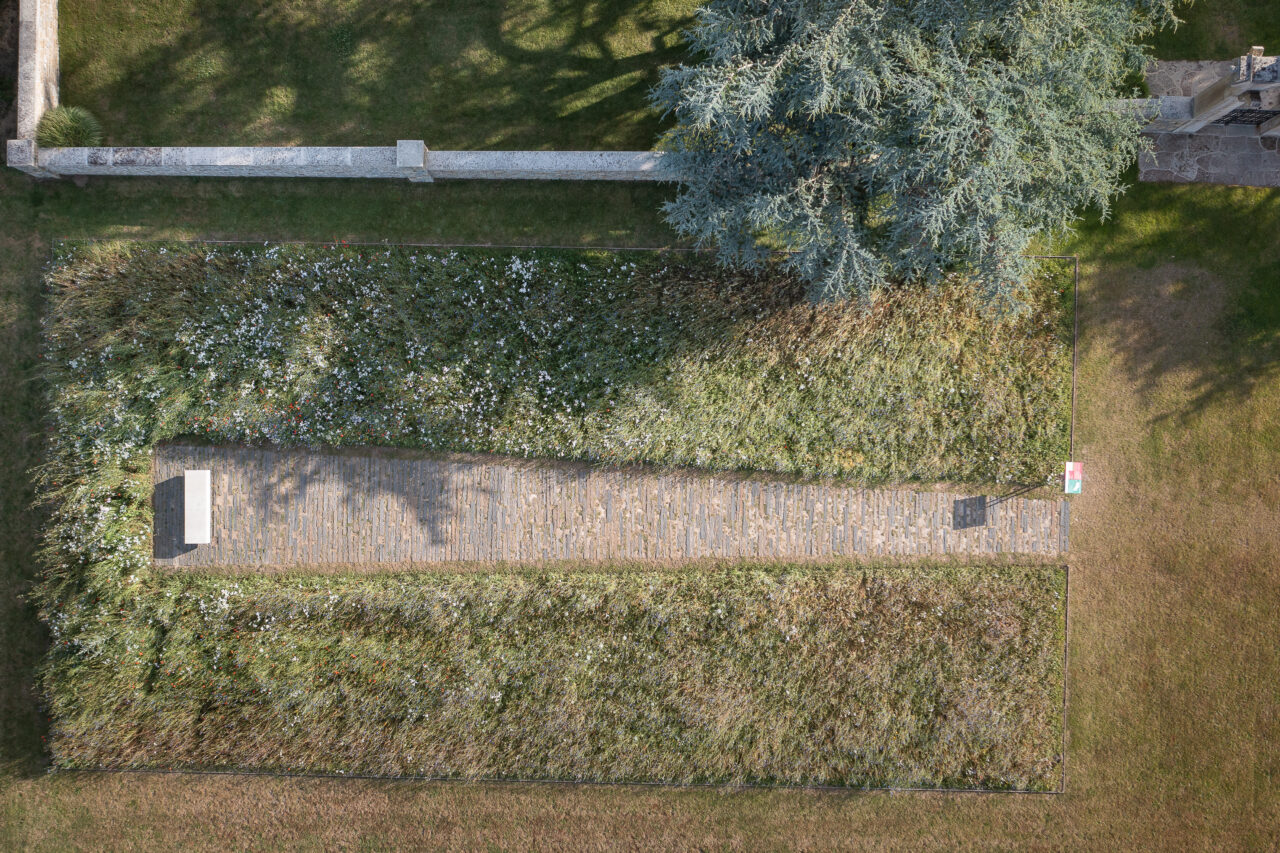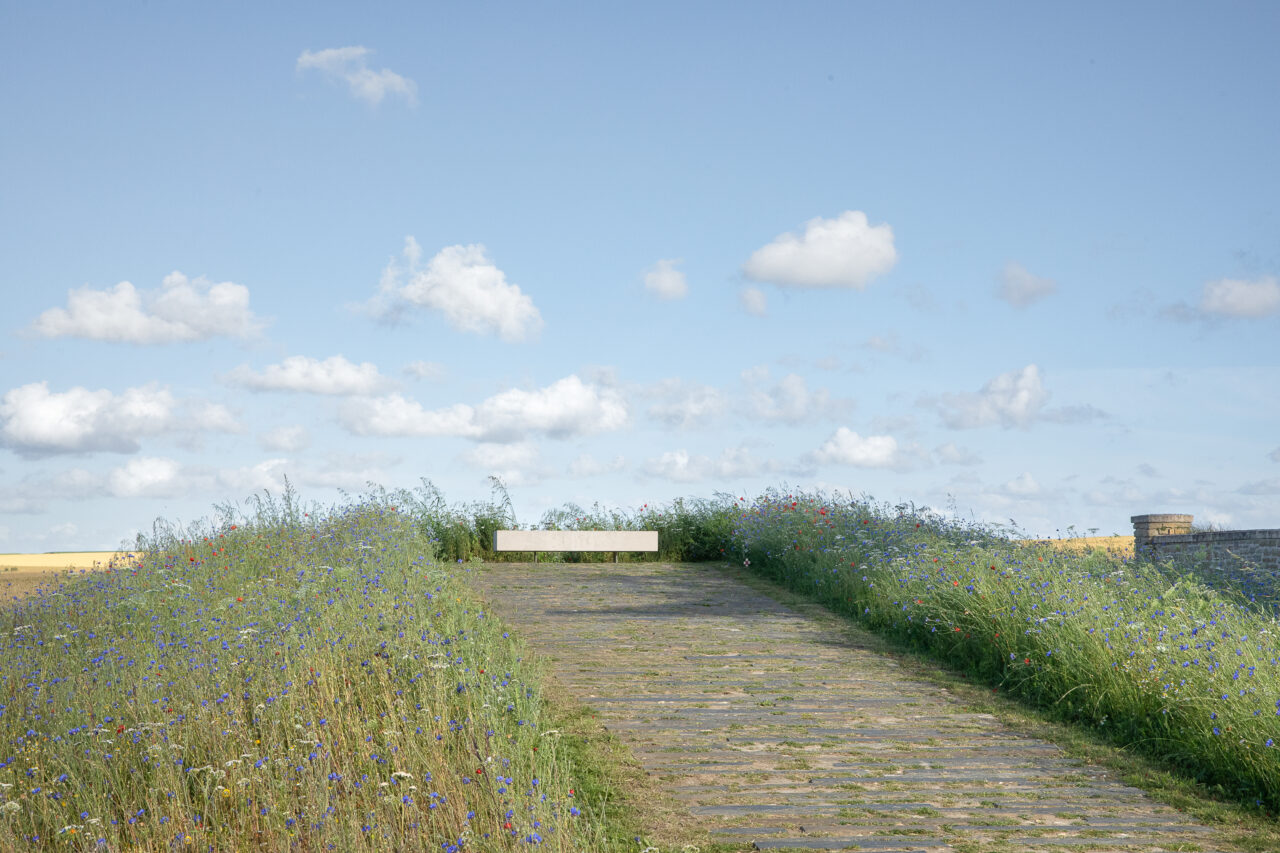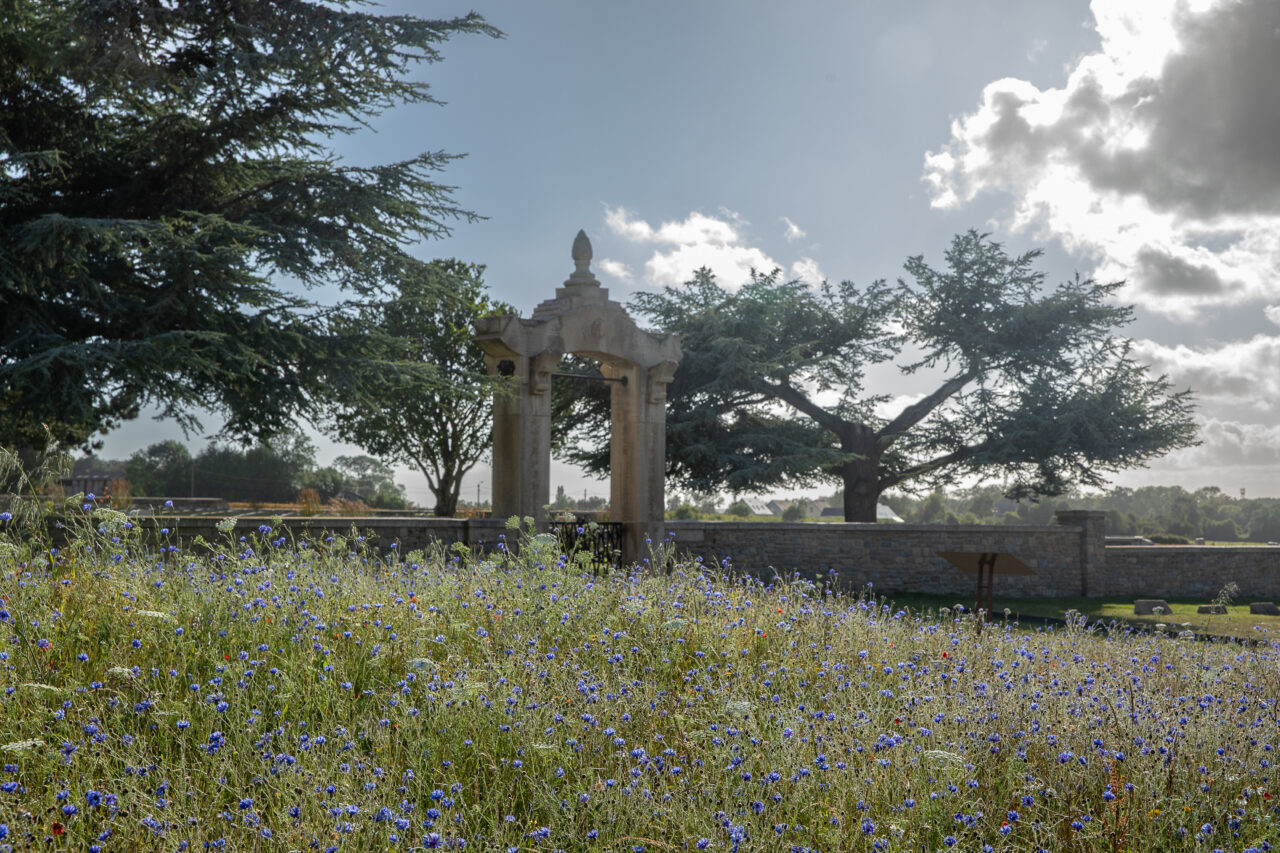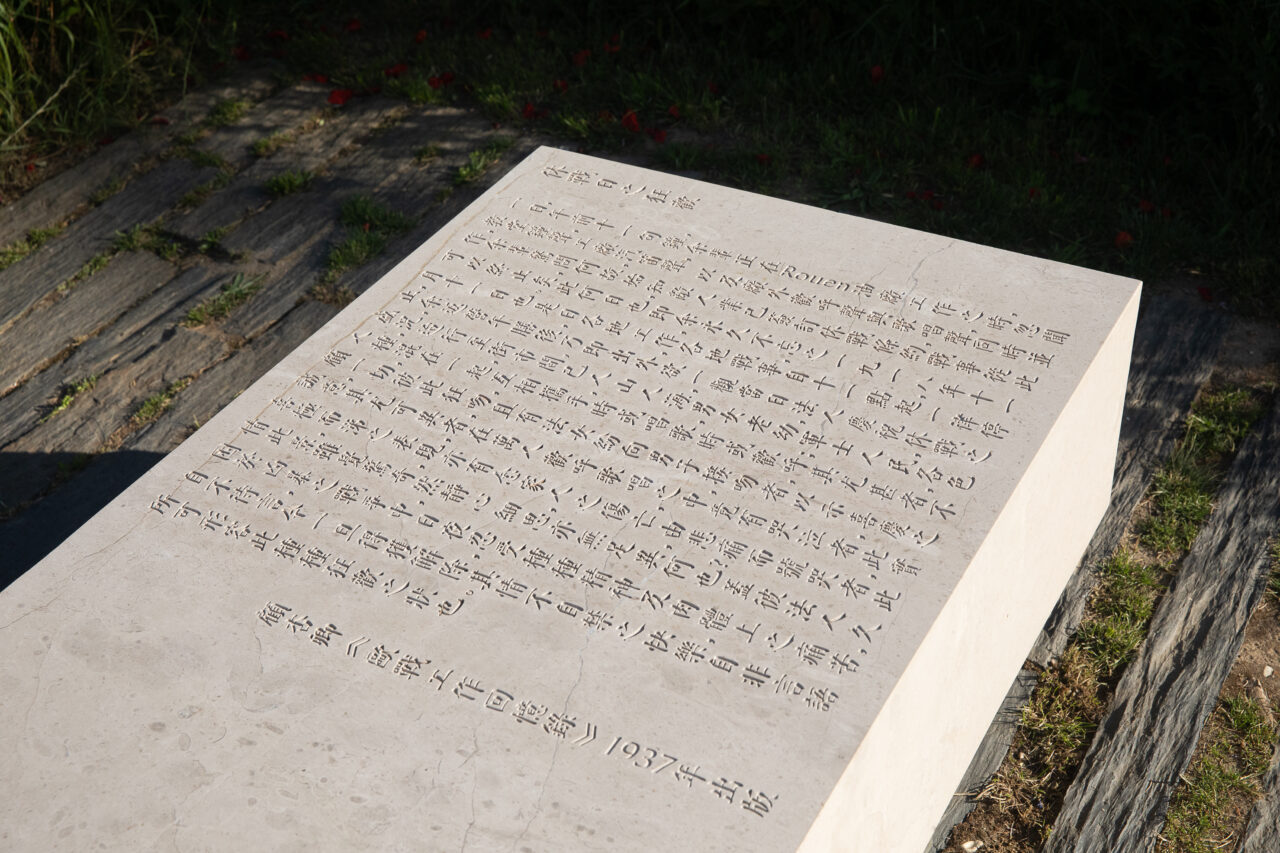Dimensions of Peace > Chinese Garden of Peace, 2024
During the Great War, Noyelles housed a large British rear base, including a camp for Chinese workers. 80,000 Chinese workers passed through this camp. In 1921, the British government decided to build a Chinese cemetery at Nolette, on the site of the old camp. 841 Chinese workers are buried in this cemetery. Most worked in this camp between 1917 and 1919.
Located in front of the cemetery, at the parking lot, the Chinese Garden of Peace “can serve as a bridge that connects memories and distant places, from where the imagination can jump freely between the divergent dimensions of this story, to measure and think about the eternal question of peace. [The] garden is quietly and perfectly nested in the surrounding fields. It almost disappears into the vast agricultural landscape, like the memories of the war and the souls that rest here. At the same time, the garden poetically evokes the larger landscape of memory. A narrow sandy path leads us from the car park to the garden, blending into the open and gently rolling fields that surround it. The driveway passes the remarkable cemetery arch to the right, and the cemetery walls loom through the tall crops that make up most of the garden. After passing in front of the arch, the path splits in two: one curves towards the arch, leading the visitor into the cemetery; the other goes towards the heart of the fields, towards the east. […] Curiosity takes the visitor to the end of the “memory trail” where he finds a stone bench. The visitor is invited to sit alone and take a break. To his right, the fingers of the visitor seated on the bench touch words carved on the surface of the bench, interwoven with small Chinese characters and their French translation. This is an introduction from the diary of Gu Xingqing, the Labour Corps translator, which describes an extraordinary spectacle of celebration at the end of the war. The experience will be as sensitive as a dream and as real as those delicate letters under the fingertips. The absolute loneliness evoked by the abrupt end of the path highlights all the contrasting dimensions of peace. As the visitor turns back to the cemetery, his eerie, lonely existence facing the vast open field now looks pleasant. […] Grass will be the main essence of the garden, small flowers will creep in like wild flowers, like in the middle of a wheat field. Stones may come to emphasize the route. In the fall and winter, once the crops have been mowed, these stones will continue to mark the course. The laborious work of mowing and semi is part of the life of the site and the imagination of the action that we wish to propose: A “harvest festival” could celebrate this agricultural event at the end of the summer, with a handmade work in which the Chinese community could participate, in shared effort, poetry and celebration. ”
Project by TIAN Tian, WANG Di, CHU Junmin & GOUYOU-BEAUCHAMPS Laurent
The artist
TIAN Tian, WANG Di, CHU Junmin & GOUYOU-BEAUCHAMPS Laurent


